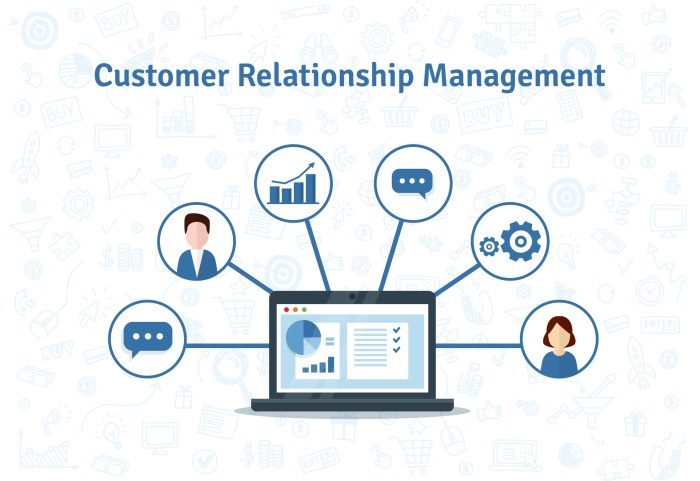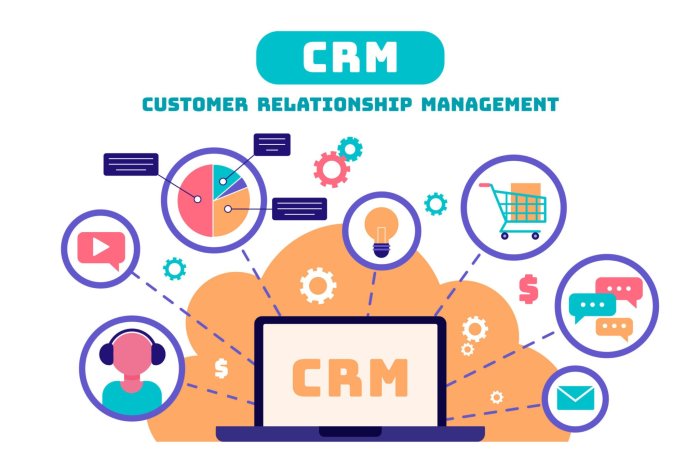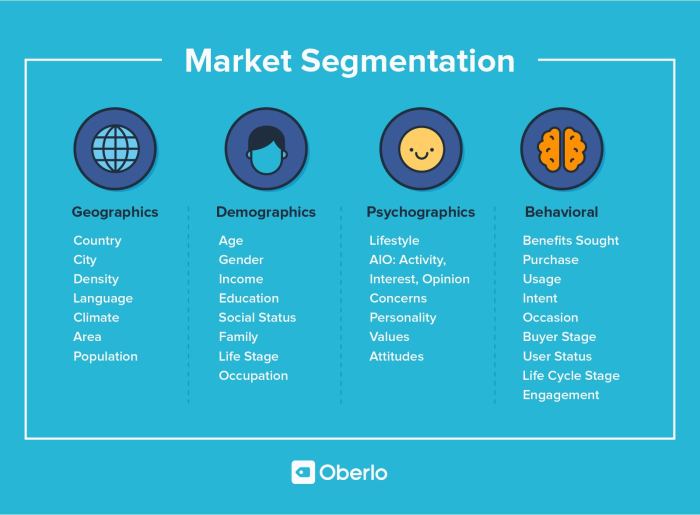CRM for Data Analytics and Reporting Insights for Growth
CRM for Data Analytics and Reporting is a powerful combination that unlocks a treasure trove of insights about your customers. By leveraging data collected through CRM systems, businesses can gain a deeper understanding of customer behavior, preferences, and needs, paving the way for more effective marketing, sales, and customer service strategies.
This comprehensive guide delves into the crucial role of data in modern CRM systems, exploring how data-driven insights can enhance customer relationships and drive business growth. We’ll cover essential CRM features for data analytics and reporting, data collection and integration best practices, and powerful data analysis techniques. Additionally, we’ll examine the importance of reporting and visualization, showcasing how CRM data can be leveraged to improve business processes and inform strategic decision-making.
The Importance of Data in CRM

Data is the lifeblood of modern CRM systems. It empowers businesses to understand their customers better, personalize interactions, and make data-driven decisions that improve customer satisfaction and drive business growth.
Data-Driven Insights Enhance Customer Relationships
Data-driven insights provide a deeper understanding of customer behavior, preferences, and needs. This knowledge enables businesses to tailor their marketing campaigns, sales strategies, and customer service interactions to individual customers. For example, by analyzing customer purchase history, a business can identify patterns and predict future purchases, enabling them to offer targeted promotions and recommendations. This personalized approach fosters stronger customer relationships and increases customer loyalty.
CRM Data Improves Sales, Marketing, and Customer Service
- Sales: CRM data can help sales teams identify potential leads, prioritize prospects, and optimize sales processes. By tracking customer interactions and sales performance, businesses can identify areas for improvement and personalize sales pitches based on individual customer needs. For instance, a CRM system can analyze customer demographics and purchase history to identify high-value prospects and recommend targeted sales strategies.
- Marketing: CRM data enables businesses to segment their customer base, personalize marketing campaigns, and measure the effectiveness of marketing initiatives. By understanding customer preferences and behaviors, businesses can create targeted campaigns that resonate with specific customer segments. For example, a business can use CRM data to send personalized email campaigns based on customer interests or past purchases. This targeted approach improves marketing ROI and strengthens customer relationships.
- Customer Service: CRM data empowers customer service teams to provide faster and more personalized support. By tracking customer interactions and service history, businesses can provide relevant solutions and anticipate customer needs. For example, a CRM system can track customer complaints and service requests, enabling businesses to identify common issues and proactively address them. This proactive approach improves customer satisfaction and reduces service costs.
CRM Features for Data Analytics and Reporting
Modern CRM systems are not just about managing customer interactions; they are powerful tools for data analytics and reporting. These capabilities provide businesses with valuable insights into customer behavior, sales trends, and marketing effectiveness, allowing them to make data-driven decisions that improve customer experience and drive revenue growth.
Data Collection and Storage
CRM systems are designed to capture a wide range of customer data, from basic contact information to detailed interaction histories. This data is stored in a central repository, making it easily accessible for analysis.
- Customer profiles: CRM systems store comprehensive customer profiles, including demographics, purchase history, website interactions, and communication preferences. This data allows businesses to segment customers and tailor marketing messages and offers.
- Sales pipeline tracking: CRM systems track every stage of the sales process, from initial lead generation to closed deals. This data provides insights into sales performance, identifies bottlenecks, and helps predict future sales trends.
- Marketing campaign performance: CRM systems track the performance of marketing campaigns, including email opens, click-through rates, and conversions. This data helps businesses optimize their marketing strategies and measure return on investment.
Data Visualization Tools
CRM systems often integrate with data visualization tools, providing interactive dashboards and reports that make it easy to understand complex data. These tools enable businesses to:
- Create custom dashboards: Users can customize dashboards to display key performance indicators (KPIs) and relevant data visualizations that align with their specific business objectives.
- Visualize trends and patterns: Data visualization tools use charts, graphs, and maps to present data in an easily understandable format, revealing trends and patterns that might be difficult to identify in raw data.
- Filter and drill down into data: Users can filter data based on specific criteria, drill down into individual records, and explore relationships between different data points.
CRM Dashboards and Reports
CRM dashboards and reports provide valuable insights into various aspects of business operations, including:
- Sales performance dashboards: These dashboards track key sales metrics, such as revenue, deals in the pipeline, and conversion rates. They provide real-time insights into sales performance and help identify areas for improvement.
- Customer engagement reports: These reports analyze customer interactions, such as website visits, email opens, and social media engagement. They help businesses understand customer behavior and identify opportunities to improve engagement.
- Marketing campaign reports: These reports track the performance of marketing campaigns, providing insights into the effectiveness of different channels and tactics. They help businesses optimize their marketing spend and maximize return on investment.
Data Collection and Integration
A robust CRM system relies on comprehensive data collection and integration. Effective data integration ensures that all customer information is centralized and accessible, enabling a holistic view of customer interactions.
Data Quality and Consistency
Data quality and consistency are crucial for accurate and reliable CRM insights. Inaccurate or inconsistent data can lead to misleading analysis, poor decision-making, and ultimately, a negative customer experience.
“Data quality is a prerequisite for data analytics. Without accurate and consistent data, your insights will be flawed, and your decisions will be based on faulty information.”
Here are some key factors that contribute to data quality in CRM:
- Accuracy: Data should be free from errors and reflect the actual customer information. For example, ensuring that customer names, addresses, and contact details are correct.
- Completeness: All relevant customer information should be captured. This includes demographics, purchase history, website interactions, and support interactions.
- Consistency: Data should be consistent across different data sources. For example, using the same format for customer names and addresses across all systems.
- Timeliness: Data should be updated regularly to reflect the latest customer information. For example, updating customer contact information when they change their phone number or email address.
CRM Integration with Other Data Sources
CRM systems often need to integrate with other data sources to gain a complete understanding of customer behavior. This integration allows businesses to gather data from various touchpoints, including:
- E-commerce platforms: Integrating with e-commerce platforms provides data on customer purchases, browsing history, and abandoned carts.
- Marketing automation tools: Integrating with marketing automation tools provides data on email campaigns, social media interactions, and website traffic.
- Customer support systems: Integrating with customer support systems provides data on customer inquiries, complaints, and feedback.
- Social media platforms: Integrating with social media platforms provides data on customer sentiment, brand mentions, and engagement.
Data Integration Strategies
Several data integration strategies can be employed to create a comprehensive view of customer data:
- Data warehousing: Data warehousing involves collecting data from multiple sources and storing it in a central repository for analysis. This approach enables businesses to analyze large datasets and identify trends and patterns in customer behavior.
- Data pipelines: Data pipelines automate the process of collecting, transforming, and loading data from various sources into the CRM system. This ensures that data is consistently updated and available for analysis.
- API integrations: Application programming interfaces (APIs) allow CRM systems to communicate with other software applications and exchange data. This enables seamless data integration between different systems.
Data Analysis Techniques for CRM
Data analysis techniques are crucial for extracting valuable insights from CRM data and making informed decisions to enhance customer relationships. These techniques allow businesses to understand customer behavior, identify trends, and predict future outcomes.
Segmentation
Segmentation involves dividing customers into groups based on shared characteristics, such as demographics, purchasing behavior, or engagement levels. This allows businesses to tailor marketing campaigns and offers to specific segments, maximizing their effectiveness.
- Demographic segmentation: Grouping customers based on age, gender, location, income, and education level. This technique helps businesses target specific demographics with relevant products and services.
- Behavioral segmentation: Classifying customers based on their purchasing history, browsing patterns, and engagement with marketing materials. This allows businesses to identify high-value customers, those who are likely to churn, or those who need additional support.
- Psychographic segmentation: Categorizing customers based on their values, beliefs, lifestyles, and interests. This technique helps businesses understand customer motivations and create targeted marketing messages that resonate with their values.
Trend Analysis
Trend analysis involves examining patterns and changes in customer data over time. This helps businesses identify emerging trends, predict future behavior, and adjust their strategies accordingly.
- Sales trends: Analyzing sales data to identify seasonal fluctuations, product popularity, and growth opportunities. This helps businesses optimize inventory management, pricing strategies, and marketing campaigns.
- Customer engagement trends: Tracking customer interactions, website visits, and social media engagement to understand customer sentiment and identify areas for improvement. This allows businesses to tailor their communication and provide better customer support.
- Market trends: Analyzing industry data and competitor activities to identify emerging trends and adapt to changing market conditions. This helps businesses stay ahead of the competition and capitalize on new opportunities.
Predictive Modeling
Predictive modeling uses statistical techniques and algorithms to predict future customer behavior based on historical data. This allows businesses to proactively address customer needs, improve customer retention, and optimize marketing efforts.
- Churn prediction: Using customer data to identify customers who are at risk of leaving. This allows businesses to implement targeted retention strategies to prevent churn and retain valuable customers.
- Upselling and cross-selling: Predicting which customers are most likely to purchase additional products or services. This helps businesses personalize offers and increase customer lifetime value.
- Lead scoring: Predicting the likelihood of a lead converting into a customer. This helps businesses prioritize their sales efforts and focus on leads with the highest conversion potential.
Reporting and Visualization
Data analytics and reporting are essential components of a successful CRM strategy. They provide valuable insights into customer behavior, sales performance, and marketing effectiveness. These insights can be used to optimize CRM processes, improve customer engagement, and drive business growth.
Types of CRM Reports and Visualizations
CRM reports provide a structured overview of data, allowing businesses to identify trends, patterns, and areas for improvement. Data visualization enhances these reports by presenting complex information in an easily understandable and engaging manner.
| Report Type | Visualization | Description |
|---|---|---|
| Sales Performance Report | Line Chart, Bar Chart | Tracks key sales metrics such as revenue, deals closed, and conversion rates over time. Helps identify trends and areas for improvement. |
| Customer Acquisition Report | Funnel Chart, Pie Chart | Analyzes the customer acquisition process, highlighting the effectiveness of different marketing channels and identifying bottlenecks. |
| Customer Retention Report | Cohort Analysis, Retention Rate Chart | Measures customer loyalty and retention rates, identifying factors that influence customer churn and strategies for improving retention. |
| Customer Segmentation Report | Scatter Plot, Heatmap | Groups customers based on shared characteristics, allowing businesses to tailor marketing campaigns and personalize customer experiences. |
| Marketing Campaign Performance Report | Bar Chart, Line Chart | Evaluates the effectiveness of marketing campaigns, tracking metrics such as open rates, click-through rates, and conversion rates. |
| Customer Service Performance Report | Bar Chart, Line Chart | Monitors customer service performance, tracking metrics such as response times, resolution rates, and customer satisfaction scores. |
Using CRM Data for Business Improvement: CRM For Data Analytics And Reporting

CRM data is a treasure trove of valuable insights that can be leveraged to enhance various aspects of a business. By analyzing customer interactions, preferences, and behaviors, businesses can optimize their operations, improve customer satisfaction, and drive revenue growth.
Optimizing Business Processes
CRM data provides a comprehensive view of customer interactions, enabling businesses to identify areas for process improvement. For example, by analyzing customer service interactions, businesses can pinpoint common pain points and develop strategies to streamline the resolution process.
- Customer Service: Analyzing call logs, emails, and chat transcripts can reveal recurring issues, allowing businesses to develop more effective training programs for customer service representatives.
- Sales: Sales data can be used to identify successful sales strategies, optimize lead qualification processes, and personalize sales pitches.
- Marketing: CRM data can inform marketing campaigns by providing insights into customer demographics, preferences, and buying behaviors. This allows businesses to target their marketing efforts more effectively and increase ROI.
Informing Decision-Making and Strategy Development
CRM data empowers businesses to make data-driven decisions and develop strategic plans based on real customer insights. By analyzing customer segmentation, purchase history, and engagement patterns, businesses can gain a deeper understanding of their target audience and tailor their offerings accordingly.
- Product Development: CRM data can inform product development by identifying customer needs and preferences. This allows businesses to develop products that are more likely to resonate with their target market.
- Pricing Strategies: By analyzing customer price sensitivity and willingness to pay, businesses can develop effective pricing strategies that maximize profitability.
- Customer Retention: CRM data can be used to identify at-risk customers and develop targeted retention strategies. This can help businesses reduce churn rates and increase customer lifetime value.
Examples of Business Growth and Success
Numerous companies have successfully leveraged CRM data to drive business growth and success.
- Amazon: Amazon’s recommendation engine, powered by CRM data, suggests products based on customer browsing and purchase history. This personalized experience drives sales and customer satisfaction.
- Netflix: Netflix uses CRM data to understand viewer preferences and personalize recommendations. This data-driven approach has contributed to Netflix’s phenomenal growth and dominance in the streaming market.
- Starbucks: Starbucks leverages CRM data to personalize customer experiences through their loyalty program. This program rewards customers based on their purchase history and preferences, fostering customer loyalty and repeat business.
CRM for Data Analytics and Reporting
Data is the lifeblood of any successful CRM strategy. To maximize its value, it’s essential to establish best practices for data analytics and reporting. These practices ensure data quality, enhance insights, and ultimately drive business improvement.
Best Practices for Utilizing CRM Data for Analytics and Reporting
Implementing a robust CRM data strategy involves several best practices that ensure data accuracy, reliability, and actionable insights.
- Define Clear Objectives: Before embarking on data analysis, establish specific goals and questions you want to answer. This ensures your efforts are focused and the insights gained are relevant to your business objectives.
- Ensure Data Quality: Accurate and complete data is crucial for meaningful analysis. Implement data cleansing processes to remove duplicates, inconsistencies, and errors. Regularly validate data sources to maintain accuracy over time.
- Standardize Data Formats: Consistency in data formats across different sources is vital for efficient analysis. Develop a standardized data schema to ensure data integration and compatibility.
- Utilize Data Visualization Tools: Visualizing data makes it easier to understand complex patterns and trends. Leverage tools like dashboards, charts, and graphs to present data in a clear and compelling manner.
- Automate Reporting: Automate routine reports to save time and ensure consistent data delivery. Set up scheduled reports to track key metrics and identify potential issues proactively.
- Embrace Data Security: Implement robust security measures to protect sensitive customer data. Ensure compliance with data privacy regulations such as GDPR and CCPA.
Checklist for Implementing a Successful CRM Data Strategy
Implementing a successful CRM data strategy involves careful planning and execution. This checklist provides a framework for navigating key considerations.
- Identify Key Performance Indicators (KPIs): Define the metrics that matter most to your business. This could include customer acquisition cost, customer lifetime value, or customer satisfaction scores.
- Establish Data Governance Policies: Define clear rules and procedures for data management, access, and usage. This ensures data integrity and compliance with regulations.
- Invest in Data Analytics Tools: Select tools that align with your business needs and provide the functionality required for data analysis, reporting, and visualization.
- Develop a Data Integration Strategy: Plan how to combine data from different sources, including CRM, marketing automation, and e-commerce platforms. This creates a comprehensive view of customer interactions.
- Foster Data Literacy: Train your team to understand and interpret data effectively. This empowers them to leverage insights for decision-making.
- Continuously Evaluate and Improve: Regularly assess the effectiveness of your CRM data strategy and make adjustments as needed. This ensures your approach remains relevant and aligned with evolving business goals.
Industry-Specific CRM Data Analytics and Reporting Best Practices
Different industries have unique data requirements and analytical needs. Here are examples of industry-specific best practices:
- Retail: Analyze customer purchase history, browsing behavior, and product preferences to personalize recommendations and improve targeted marketing campaigns. Track customer churn rates to identify factors contributing to lost sales.
- Financial Services: Monitor customer risk profiles, investment behavior, and account activity to personalize financial advice and optimize risk management strategies. Track customer satisfaction and engagement to improve service quality.
- Healthcare: Analyze patient demographics, medical history, and treatment outcomes to personalize care plans and improve patient outcomes. Track patient satisfaction and engagement to enhance service quality.
- Education: Analyze student demographics, academic performance, and course enrollment data to personalize learning experiences and improve student outcomes. Track student satisfaction and engagement to enhance the learning environment.
Future Trends in CRM Data Analytics

The realm of CRM data analytics is constantly evolving, driven by technological advancements and the ever-changing needs of modern businesses. Emerging trends, particularly in artificial intelligence (AI) and machine learning, are poised to revolutionize how businesses leverage CRM data for insights and decision-making.
The Impact of AI and Machine Learning
AI and machine learning are transforming CRM data analytics by automating complex tasks, uncovering hidden patterns, and enabling more accurate predictions. AI-powered CRM solutions can analyze vast amounts of data in real-time, identifying customer trends and preferences that might otherwise go unnoticed. This allows businesses to personalize customer interactions, optimize marketing campaigns, and improve customer service.
AI-Powered CRM Analytics: Examples and Applications, CRM for Data Analytics and Reporting
- Predictive Customer Churn: AI algorithms can analyze historical data to identify patterns associated with customer churn. By predicting which customers are likely to leave, businesses can proactively intervene with targeted retention strategies, reducing churn rates and increasing customer lifetime value.
- Personalized Marketing: AI-powered CRM systems can personalize marketing campaigns based on individual customer preferences and behavior. This results in more relevant and effective marketing messages, leading to higher conversion rates and customer engagement.
- Automated Customer Service: AI-powered chatbots and virtual assistants can handle routine customer inquiries and provide instant support, freeing up human agents to focus on more complex issues. This improves customer satisfaction and reduces response times.
Real-Time Insights and Actionable Intelligence
AI and machine learning enable CRM systems to provide real-time insights into customer behavior, allowing businesses to react quickly to changing market conditions. This agility is crucial in today’s dynamic business environment. For example, if a CRM system detects a sudden surge in interest in a particular product, businesses can immediately adjust their marketing strategies to capitalize on the opportunity.
By embracing CRM for data analytics and reporting, businesses can transform their understanding of their customers and unlock new opportunities for growth. From targeted marketing campaigns and personalized customer experiences to improved sales forecasting and proactive customer service, the insights gleaned from CRM data empower businesses to make data-driven decisions that lead to success.
FAQ Resource
What are the key benefits of using CRM for data analytics and reporting?
Utilizing CRM for data analytics and reporting offers numerous benefits, including enhanced customer understanding, improved marketing effectiveness, increased sales productivity, optimized customer service, and data-driven decision-making for strategic growth.
How can I ensure data quality and consistency in my CRM system?
Data quality and consistency are paramount for effective CRM analytics. Implement data validation rules, regularly clean and deduplicate data, and establish clear data entry guidelines to maintain accuracy and reliability.
What are some common CRM reports that can be used to track key performance indicators (KPIs)?
Common CRM reports include sales pipeline reports, customer churn reports, marketing campaign performance reports, customer satisfaction surveys, and customer lifetime value analysis reports.
How can I use CRM data to predict customer behavior and improve customer retention?
Leverage predictive modeling techniques within your CRM system to identify customers at risk of churn, analyze customer purchase patterns, and personalize marketing campaigns to enhance customer engagement and retention.
